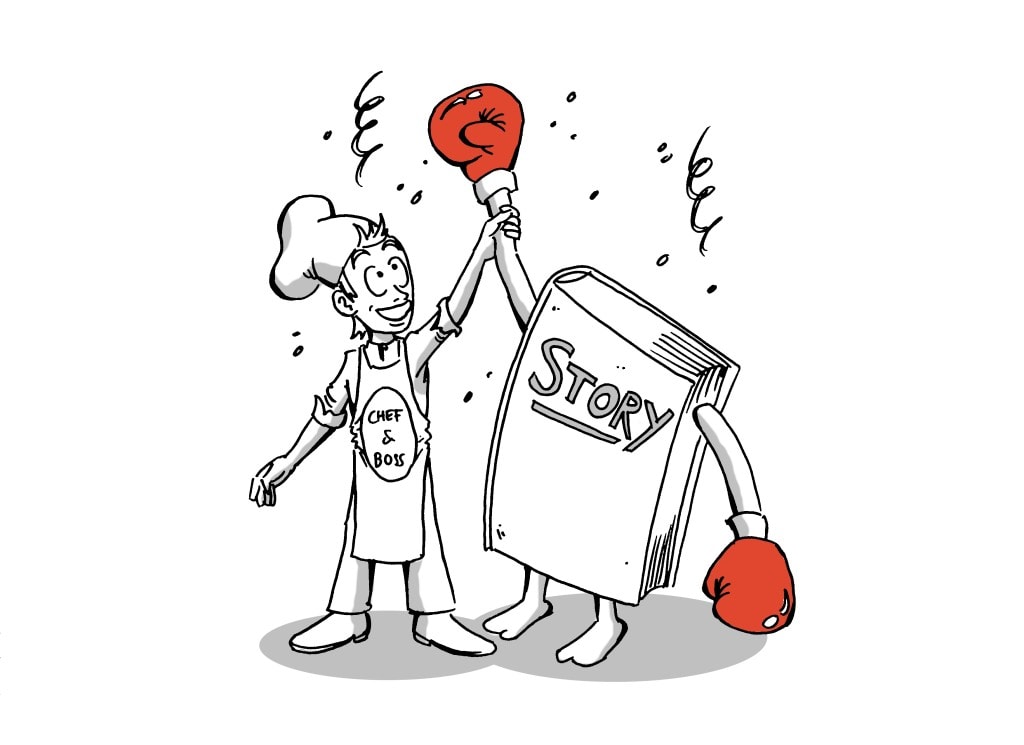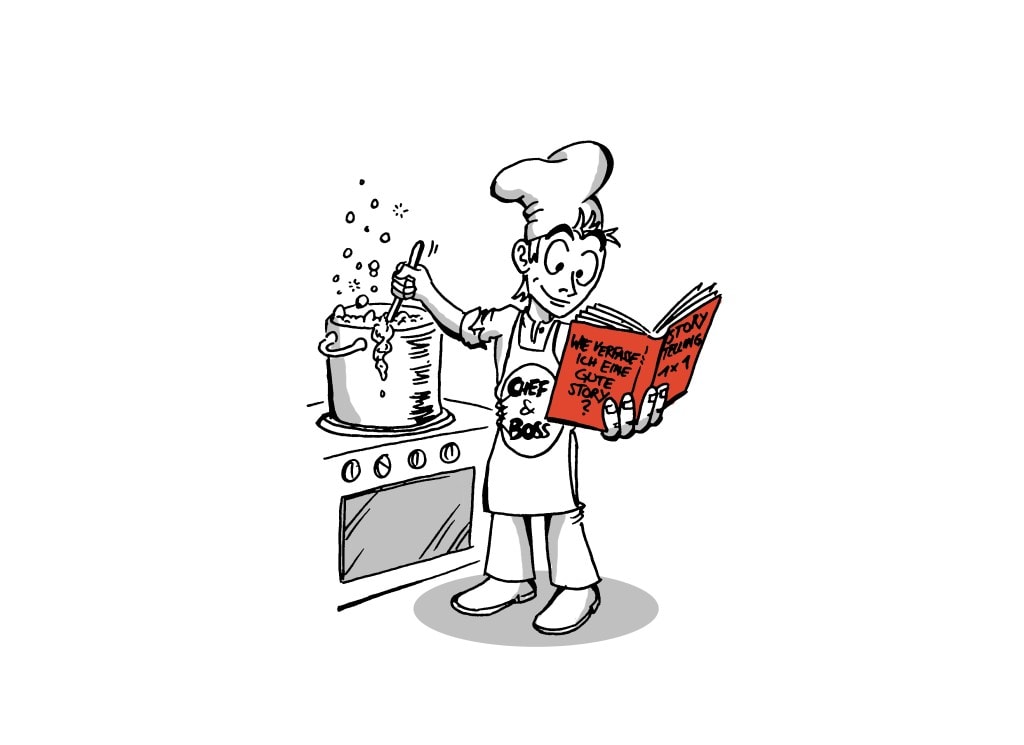
5 Ingredients For a Perfect Storytelling Menu
Natalie Ediger, May 24, 2016· Digital Learning
The famous salt in soup
Cooking and storytelling are actually two very different things. Nevertheless, there is one thing in common: in the end you get a satisfying result only with a necessary portion of devotion and the right ingredients.
Anyone who has ever cooked soup and forgotten the salt knows that the absence of a single component can be devastating. And you’ve probably guessed it already: It’s no different with storytelling.
It’s the individual components that last make for an extraordinary experience.
In this article, we want to present you with five important ingredients for a good story. You are guaranteed to create stories that your audience will remember – like a delicious gourmet menu.
Ingredient one: own experience
If you need inspiration for a dinner, you can download thousands of different recipes from the Internet. If you follow the instructions carefully, nothing can go wrong. But you can only create a really special taste experience if you give the recipe its own note, optimize it and, at best, refine it.
A personal touch is also advantageous for storytelling. Nothing makes your story more emotional and captivating than if you draw on your own wealth of experience while telling the story. If you use the words “Listen, something unbelievable happened to me lately” in your story, you’re sure to get the attention of the audience. First-hand experiences have more appeal than anything that has only been picked up indirectly.
YOU tell the story, and therefore it is best if YOU are also part of the story. Since you are also emotionally involved, this is the only way to give the story an exciting element.
Ingredient two: Packing start
Virtually anyone can cook pasta. But very few people conjure a masterpiece out of such a simple dish, which is surprising. If the guest is convinced of the dish with the first bite, then he will not only plaster the meal, but also enjoy it. So it is exactly this first bite that is decisive!
In storytelling, the first bite corresponds to the introductory part. Right at the beginning of the story you have to succeed in gripping the listener. Here he has to be promised that it’s worth listening to the story. How to do that? There are different methods: Either a funny anecdote, an amazing fact or a completely unexpected introduction – all of course always against the background of the story’s basic theme. Which leads us straight to ingredient three.
Ingredient three: a strong theme
In Switzerland, deer pepper is a popular food in the autumn season. A dish whose theme, of course, is autumn: venison, spaetzle, cooked apples with cranberries, red cabbage, chestnuts and grapes. Things that have a season in autumn.

Even with a good story, it’s an advantage to have a theme. This can be a lot of things.
In the world of film themes are omnipresent: For example revenge (“Play me the song of death”, “Kill Bill”),
Man versus Nature (“Jurassic Parc”, “The Day after Tomorrow”) or Love overcomes all hurdles
(“The Notebook”, “Shrek”). These are all topics that people are carried away by because they are simple and strong at the same time.
Your story also needs a strong theme. It doesn’t have to be as bold as the examples mentioned earlier. But it is always an advantage if the topic means something to the audience and touches them.
Ingredient four: generate and keep interest
A good cook manages to keep the guests happy with every new course, even with a dissipating dinner. Boredom is also the worst thing that can happen when eating.

What you don’t want to see as a storyteller are yawning faces in the audience. But how can you avoid this? Even if you’ve managed to get your audience interested with a good start, that doesn’t automatically mean you’ll be hanging on your lips until the end of the story. We live in times when the attention spans are extremely short thanks to continuous media bombardment. One of the key questions of storytelling is therefore:
How do I keep my listeners happy?
You can do that, for example, by challenging the audience. A good way to do this is to ask questions (avoid open questions if possible). “Have you ever witnessed a crime?” or “Which one of you is religious?” are good examples of closed questions with which you keep the audience engaged and awake.
Ingredient five: The punch line
What is the crowning glory of every menu? What is so tempting that there’s always room for it in your stomach, even if you’ve been full for a long time? Right, the dessert!

The “dessert” of your story is the key message. The information that justifies telling the story at all. Important: Everything you mention should ultimately lead to the core message. The whole thing can confidently also be called a “punch line”.
So be careful not to digress too much. Episodes that have nothing to do with the core statement quickly make the listener lose interest. If, however, you succeed in working towards the punch line with every sentence, you will create a suspense arc that, in the best case, remains intact until the end of the story.
“It’s more like… guidelines.”
What you’ve just read sounds a little theoretical. But of course it is not to be understood as a construct of rigid rules. Storytelling has no fixed rules. The five points mentioned are intended to serve more as guidelines for creating a story. With their help you trigger something positive in the audience. And with a little skill the story becomes a success.
The story belongs to you, you have the freedom to tell it the way you want.
Ultimately, the same applies to storytelling as to cooking: try it out! What works, what doesn’t? You’ll only find out by experimenting.
Have fun with it!